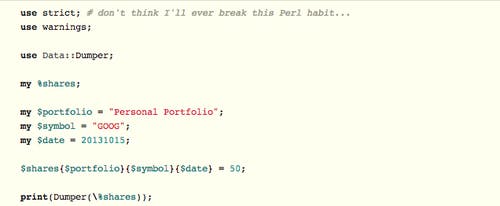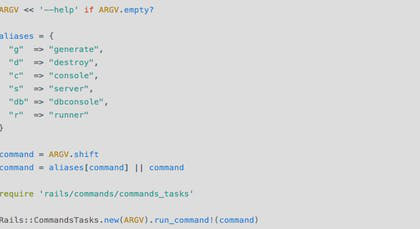Flatiron School

Flatiron School
Autovivification in Ruby
Autovivification is the concept that a hash style data structure can make inferences about its internal structure as it is being created

Flatiron School
Flatiron Day 14: ARC and UI Tricks
The following is a guest post by Dulio Denis and originally appeared on his blog. Dulio is currently in the iOS-000 class at The Flatiron School. You can follow him on Twitter here. Another geofencing Morning Assessment. This time I put in a button to switch between jumping in and out of the region I set-up so I wouldn’t […]

Flatiron School
Tracing Recursion Through the Towers of Hanoi Problem
The following is a guest post by Christopher Lee and originally appeared on his blog. Christopher is currently in the Ruby-003 class at The Flatiron School. You can follow him on Twitter here. During my second week of learning how to code at the Flatiron School, we were given the Towers of Hanoi problem to apply our new […]

Flatiron School
Creating Custom Map Annotations using MKAnnotation Protocol
The following is a guest post by Basar Akyelli and originally appeared on his blog. Basar is currently in the iOS-000 class at The Flatiron School. You can follow him on Twitter here. This week at Flatiron School, we learned how to create custom UIMapView annotations using the MKAnnotation protocol. Even though at first I found it to be […]
Flatiron School
Dynamic Dispatch 101
Metaprogramming is code that operates at the highest levels of abstraction so as to reduce total lines of hard coded processes and data.

Flatiron School
Flatiron School Weekend Three – The Tap Method
The following is a guest post by Samuel Owens and originally appeared on his blog. Samuel is currently in the Ruby-003 class at The Flatiron School. You can follow him on Twitter here. Today I wanted to talk about a couple ways I think the .tap method in Ruby is useful. The first time a lot of us […]

Flatiron School
A Short Explanation of ARGV
The following is a guest post by Joe O’Conor and originally appeared on his blog. Joe is a Flatiron School alumni. You can follow him on Twitter here. I’d come across ARGV or ARGV[0] a few times while looking at code examples on StackOverflow or the Ruby mailing lists. I recognized it as a kind of placeholder variable, but did not really […]
Browse by Category
- All Categories
- Admissions
- Alumni Stories
- Announcements
- Artificial Intelligence
- Career Advice
- Cybersecurity Engineering
- Dallas
- Data Science
- Denver Campus
- Diversity In Tech
- Enterprise
- Flatiron School
- Hackathon
- How To
- NYC Campus
- Online Campus
- Partnerships
- Software Engineering
- Staff / Coach Features
- Tech Trends
- Texas
- UX / UI Product Design
- Women In Tech
